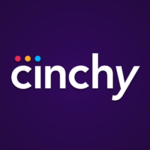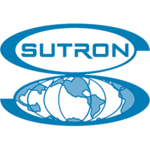Description

Cinchy

Tealium
Comprehensive Overview: Cinchy vs Tealium
Cinchy
a) Primary Functions and Target Markets
Primary Functions:
Cinchy is a data collaboration platform designed to enable organizations to manage their data as reusable components. Its primary functions include:
- Data Collaboration: Allows users to integrate data from various sources without creating copies, thus avoiding data silos.
- Data Access Control: Provides robust permission settings to ensure data security and compliance.
- Real-Time Data Management: Offers capabilities for real-time data updates and sharing across systems and users.
- Application Development: Facilitates the building of low-code applications by leveraging its unified data platform.
Target Markets:
- Enterprises looking for centralized data management solutions, especially in industries like banking, healthcare, and government.
- Companies interested in data-centric digital transformation strategies.
- Organizations aiming to reduce complexities associated with data integration and silos.
b) Market Share and User Base
Cinchy is relatively new compared to other established data management platforms, which means its market share and user base are growing but not as extensive as older, more established solutions. It is gaining traction particularly among businesses focusing on innovative data collaboration and management solutions.
c) Key Differentiating Factors
- Data-Centric Approach: Unlike traditional data management tools that often focus on data warehousing or BI, Cinchy treats data as a real-time collaborative entity.
- Data as a Network: Innovatively provides a "data fabric" that connects all data sources without creating new silos.
- Elimination of Data Copies: Allows for direct data access and collaboration, reducing redundancy and inconsistency.
- User-Friendly Low-Code Interface: Empowers non-technical users to develop applications using the data network.
Tealium
a) Primary Functions and Target Markets
Primary Functions:
Tealium is a tag management system and customer data platform that helps organizations unify their customer data across various touchpoints. Its primary functions include:
- Tag Management: Facilitates the management of tracking tags used for analytics, marketing, and advertising.
- Customer Data Platform (CDP): Centralizes customer data to create a single customer view for personalized marketing efforts.
- Event Stream Processing: Real-time processing and delivery of data to various integrated tools.
- Data Governance and Privacy: Provides features to ensure compliance with data privacy regulations like GDPR and CCPA.
Target Markets:
- Businesses heavily invested in digital marketing, including e-commerce, retail, and media.
- Companies seeking to optimize their customer data infrastructure for better personalization and engagement.
- Marketing teams looking for robust tools to manage and deploy marketing technologies efficiently.
b) Market Share and User Base
Tealium is a leader in the tag management and customer data platform space, with a significant market share. It boasts a diverse customer base, including large enterprises across different verticals, known for its reliability and comprehensive data handling capabilities.
c) Key Differentiating Factors
- Comprehensive Tag Management: Offers one of the most versatile and widely adopted tag management systems in the market.
- Real-Time Customer Data Platform: Specializes in providing real-time customer insights and integrating them across multiple tools and platforms.
- Scalability: Provides solutions that can easily scale with business needs, catering to both medium-sized enterprises and large global corporations.
- Focus on Marketing and Customer Experience: Strongly oriented towards optimizations in marketing operations and enhancing customer experiences.
Comparative Summary
Market Focus:
- Cinchy focuses on data collaboration and management for versatile applications across various sectors.
- Tealium specializes in tag management and customer data platforms, predominantly catering to marketing needs.
Differentiation:
- Cinchy is distinctive for its innovative approach to treating data as a network and its robust real-time capabilities for data collaboration.
- Tealium stands out with its comprehensive and scalable tag management system, providing real-time customer insights and personalization features.
User Base:
- Cinchy serves businesses that require agile data management and collaboration with a focus on transformative data strategies.
- Tealium has a well-established user base in marketing-focused industries, underlined by its robust capabilities in managing and integrating marketing technologies.
Both products, while operating in the data management space, cater to distinct needs and target different aspects of data usage in an organization. Cinchy appeals to companies focusing on data-driven application development and real-time collaboration, while Tealium attracts businesses aiming to optimize their marketing and customer experience strategies.
Contact Info

Year founded :
2017
+1 844-424-6249
Not Available
Canada
http://www.linkedin.com/company/cinchy

Year founded :
2011
+1 858-779-1344
Not Available
United States
Not Available
Feature Similarity Breakdown: Cinchy, Tealium
When comparing Cinchy and Tealium, it's important to note that while both are involved in data management and integration, they serve somewhat different primary functions within that space. Here's a breakdown of their similarities, user interfaces, and unique features:
a) Core Features in Common:
-
Data Integration:
- Both Cinchy and Tealium allow for integration with various data sources. Cinchy does this through its data collaboration platform that integrates data from multiple enterprise sources, while Tealium provides a universal data hub primarily through tag management and API connectors.
-
Data Governance and Security:
- Both platforms emphasize strong governance and security protocols to protect data integrity and privacy. Cinchy focuses on a "data fabric" approach that includes access controls, while Tealium offers robust consent management and data protection features.
-
Real-Time Data Processing:
- Both offer capabilities to work with data in real-time. Cinchy provides real-time data connectivity through its architecture, whereas Tealium ensures real-time data flow and audience streaming for marketing technology ecosystems.
-
Analytics and Reporting:
- They both offer functionality to analyze and report on integrated data. Cinchy enables centralized analytics through collaboration, and Tealium offers detailed insights into customer data and engagement, often in the context of marketing and digital analytics.
b) User Interface Comparison:
-
Cinchy:
- Cinchy's interface is typically more focused on data management at a granular level. It offers a collaborative data environment, which means that the interface is structured like a workspace where data is accessed and manipulated for direct collaboration.
- The design revolves around ease of access to connected data across silos, providing tools for collaboration and sharing in a straightforward manner.
-
Tealium:
- Tealium's interface is tailored towards digital marketing and customer data management. It usually features dashboards for overseeing tag management, data collection, and customer journey mapping.
- The UI is optimized for users who need to connect and manage data points across different marketing tools and platforms, providing visualizations and tools to streamline these processes.
c) Unique Features:
-
Cinchy:
- Data Collaboration Platform: Cinchy's most distinguishing feature is its collaborative data environment, which functions like a decentralized data store that allows various applications and teams to work together without traditional data integration barriers.
- Elimination of Data Silos: It focuses on eliminating data silos by providing a platform where data is natively integrated and accessible to all authorized applications and users.
-
Tealium:
- Tag Management System (TMS): Tealium is well-known for its leading-edge tag management capabilities, which is particularly useful for marketing operations needing quick and efficient tag deployment across various digital assets.
- Customer Data Platform (CDP): Tealium's CDP offers in-depth capabilities for customer data aggregation, management, and activation, primarily targeting marketing and customer experience departments.
- Tealium AudienceStream: This feature allows for sophisticated audience segmentation and engagement in real time, aiding in personalized marketing efforts.
While both Cinchy and Tealium provide robust solutions for data integration and management, their unique strengths lie in different areas of focus: Cinchy as a collaborative data environment across organizational silos, and Tealium as a comprehensive solution for marketing technology ecosystems with advanced tag management and customer data capabilities.
Features

Not Available

Not Available
Best Fit Use Cases: Cinchy, Tealium
Cinchy
a) Best Fit Use Cases for Cinchy:
-
Data-Centric Organizations: Cinchy is ideal for companies that want to manage and utilize data efficiently without the complexities of traditional data infrastructure. This is particularly useful for organizations aiming to break down data silos and enhance collaboration.
-
Financial Services: Given its robust data governance features, Cinchy is a great choice for financial institutions that handle sensitive data and need to comply with stringent regulations. The platform ensures secure access and control, making it suitable for banks, insurance companies, and investment firms.
-
Healthcare: Healthcare organizations can leverage Cinchy to integrate disparate data sources, improve patient data management, and ensure compliance with data protection regulations such as HIPAA.
-
Enterprises with Complex IT Ecosystems: Companies with multiple systems and applications benefit from Cinchy’s ability to provide a unified data layer, reducing redundancy and improving data consistency across the enterprise.
d) Industry Verticals and Company Sizes:
-
Large Enterprises: Large organizations with significant data management challenges benefit from Cinchy's ability to simplify data integration and enhance collaboration.
-
Regulated Industries: Sectors requiring stringent data governance and compliance—such as finance, healthcare, and government—find Cinchy particularly useful.
-
Cross-Industry Applicability: While Cinchy is particularly strong in regulated environments, its capabilities apply broadly to any industry with heavy data usage and collaboration needs.
Tealium
b) Preferred Scenarios for Tealium:
-
Digital Marketing and E-commerce: Tealium specializes in customer data management and enhances digital marketing efforts. It's ideal for e-commerce businesses that need to streamline customer data across various digital touchpoints and personalize customer experiences.
-
Analytics and Tag Management: Tealium is preferred by businesses looking to enhance their analytics capabilities through sophisticated tag management, allowing for better tracking and understanding of customer behavior across platforms.
-
Multi-Channel Marketing: Businesses engaged in complex, multi-channel marketing campaigns benefit from Tealium’s ability to unify customer data across different channels, enabling more effective marketing strategies.
d) Industry Verticals and Company Sizes:
-
Medium to Large Enterprises: Tealium is well-suited for medium to large businesses that manage significant customer data and run extensive digital marketing operations.
-
Retail and E-commerce: Companies in these sectors leverage Tealium to achieve a comprehensive view of customer interactions, optimizing marketing and sales strategies.
-
Travel and Hospitality: Businesses in these industries use Tealium to align customer touchpoints and personalize services, improving customer loyalty and experiences.
In summary, Cinchy and Tealium cater to different segments and needs. Cinchy is more about data collaboration and breaking silos in data-heavy industries, while Tealium focuses on customer data integration and digital marketing enhancements, particularly beneficial for marketing-intensive sectors.
Pricing

Pricing Not Available

Pricing Not Available
Metrics History
Metrics History
Comparing teamSize across companies
Conclusion & Final Verdict: Cinchy vs Tealium
To determine the best overall value between Cinchy and Tealium, it's essential to consider each product's unique capabilities, strengths, and potential drawbacks. Here's a structured analysis of both:
Conclusion and Final Verdict:
a) Best Overall Value:
The determination of the best overall value between Cinchy and Tealium largely depends on the specific needs of an organization.
-
Cinchy offers a unique proposition with its Dataware technology that allows organizations to manage data as a network, enabling seamless data collaboration without the need for traditional data integration. It's particularly valuable for organizations aiming to reduce data silos, improve data accessibility, and lower integration complexity.
-
Tealium, on the other hand, excels in the area of tag management and customer data platforms, offering robust solutions for organizations heavily focused on digital marketing, customer experience, and real-time data analytics. It provides comprehensive customer insights through data integration and connectivity across platforms.
Verdict: If the primary focus is on simplifying complex data integration and enhancing internal data collaboration, Cinchy offers the best overall value. However, if the goal is to boost marketing efforts with real-time customer data and analytics, Tealium provides the best value.
b) Pros and Cons:
Cinchy:
-
Pros:
- Reduces data silos and simplifies data management with its Data Fabric approach.
- Enhances data agility and collaboration across business processes.
- Lowers the need for traditional ETL processes, enabling faster deployment.
-
Cons:
- May require a shift in organizational mindset and process adjustment to maximize potential.
- As a newer technology, may have a smaller community or market penetration.
Tealium:
-
Pros:
- Provides real-time data collection and processing, essential for dynamic digital marketing.
- Strong integration capabilities with numerous online platforms.
- Robust customer data platform features for improved audience segmentation and insights.
-
Cons:
- Primarily focused on marketing and customer data, which may not be suitable for all use cases.
- Potentially higher costs associated with comprehensive implementation and scaling.
c) Recommendations:
For users deciding between Cinchy and Tealium:
-
Assess Business Needs: Evaluate the primary challenges within your organization. If reducing data silos and enabling internal collaboration is critical, Cinchy may be the better choice. For enhancing marketing strategies and customer interaction, Tealium is optimal.
-
Consider Long-term Goals: Organizations should consider their long-term digital transformation goals. Cinchy might suit a broader enterprise data strategy, while Tealium can transform customer engagement.
-
Resource Availability: Evaluate available internal resources for data management and integration. If the internal capability to adapt to new technologies exists, Cinchy’s innovative approach could be advantageous. Conversely, if there’s a robust marketing team ready to leverage enhanced data analytics, Tealium could be more beneficial.
-
Scale and Flexibility: Consider the scale of current operations and need for flexibility. Cinchy is innovative but may need adaptation, while Tealium’s proven model might offer more immediate value in marketing-centric environments.
Ultimately, the decision should align with strategic objectives, existing infrastructure, and the specific benefits that align more closely with organizational priorities. It may also be beneficial to engage in pilot programs or demos of both products to understand their real-world impact on workflows and objectives.
Add to compare
Add similar companies




